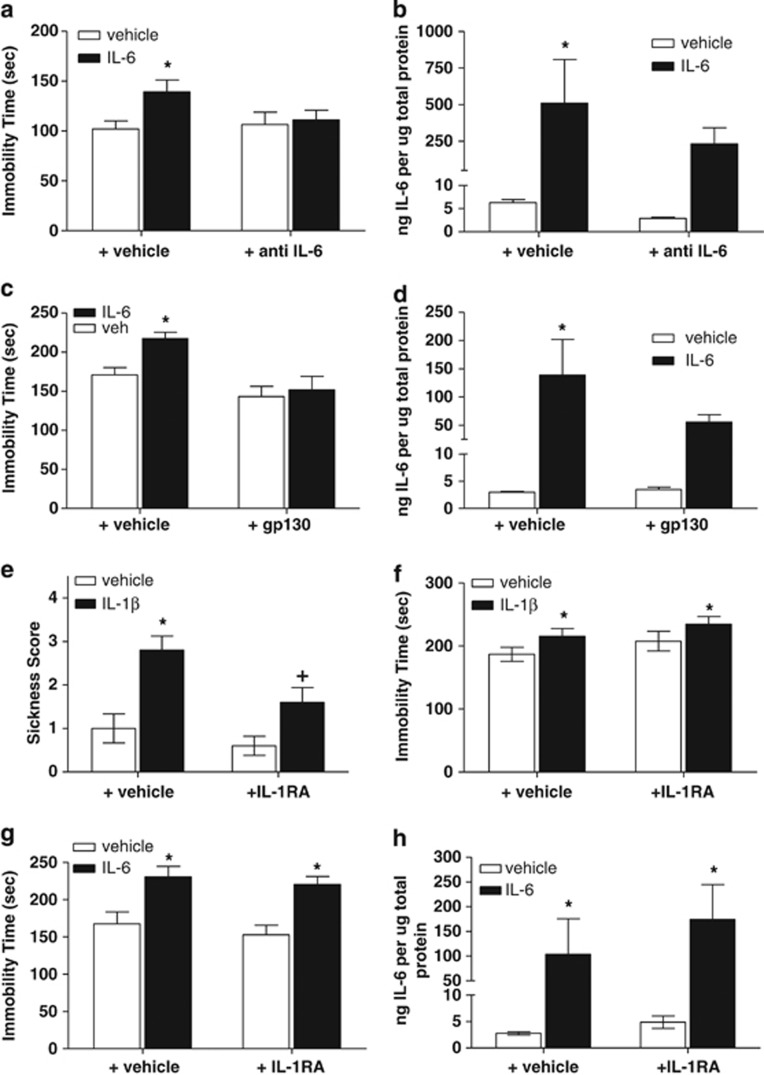Figure 5.
Modulation of interleukin-6 (IL-6)-induced signaling in the central nervous system (CNS) blocks IL-6-induced increases in protein levels and depressive-like behavior in Swiss Webster mice independent of IL-1. (a) Pretreatment with anti-IL-6 antibody (1 μg, intracerebroventricularly (i.c.v.)) prevented the increase in IL-6-induced immobility (*P<0.05 vs vehicle (veh)/veh-treated control; n=10–11 per treatment group) and (b) attenuated IL-6-induced increases in protein in the cortex relative to IL-6 coadministered with vehicle control indicating a direct and specific interaction at the receptor level (*P<0.05 vs veh/veh-treated control; n=3–4 per treatment group). (c) Coadministration of an Fc chimera of soluble gp130 prevented the IL-6-induced increases in immobility observed when IL-6 was coadministered with vehicle (*P<0.05 vs veh/veh-treated control; n=6–9 per treatment group) and (d) produced an attenuation of IL-6 protein in cortex (*P<0.05 vs veh/veh-treated control; n=3–6 per treatment group). (e) Pretreatment with the IL-1 receptor antagonist (IL-1RA) (1 μg, i.c.v.) blocked the IL-1β-induced increases in sickness behaviors (*P<0.05 vs veh/veh-treated control; +P<0.05 vs veh/IL-1β n=10 per treatment group) but (f) failed to attenuate the IL-1β-induced increases in immobility time in the tail suspension test (*P<0.05 vs veh/veh-treated control; n=10 per treatment group). (g) Central administration of IL-6 (1 μg, i.c.v.) produced the expected increase in immobility time in the tail suspension test indicative of a depressive-like phenotype, which was not blocked by pretreatment of IL-1RA (1 μg, i.c.v.) (*P<0.05 vs veh/veh-treated controls; n=8–12 per treatment group). (h) The IL-1 antagonist IL-1RA fails to block IL-6-induced increases in IL-6 protein levels in the cortex as measured by enzyme-linked immunosorbent assay (ELISA) (*P<0.05 vs veh/veh-treated controls; n=3–4 per treatment group).

